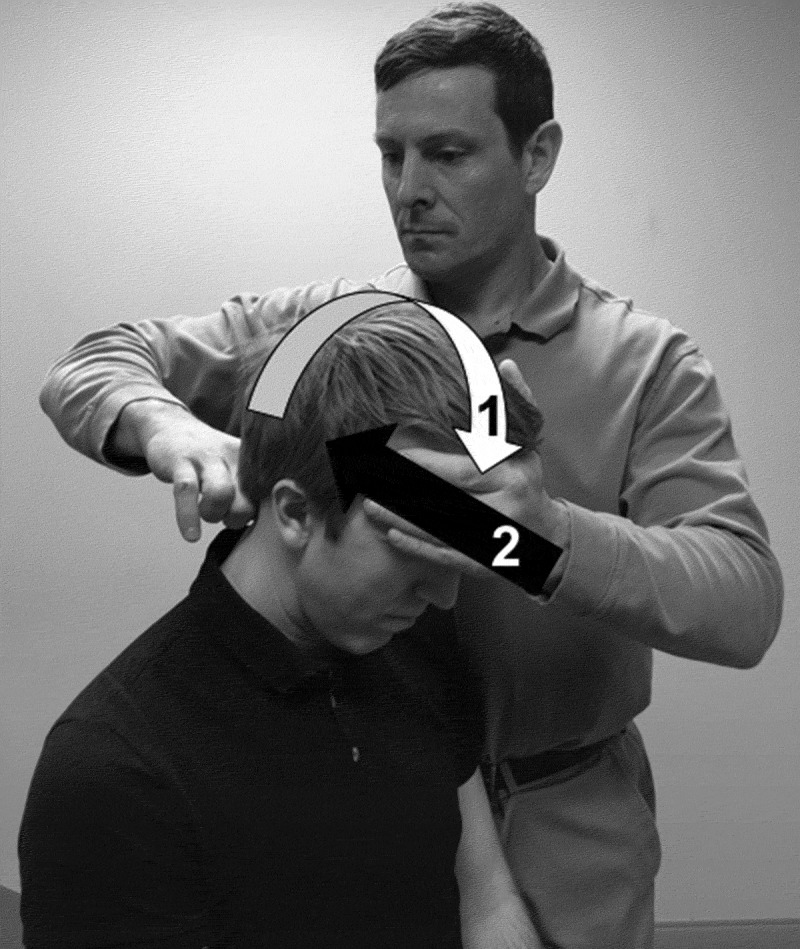Figure 1.

The Sharp-Purser Test.
First, the patient’s head is semi-flexed to 20º-30º in a seated position (WHITE ARROW). The clinician assesses for any numbness and/or tingling in the arms or legs. If the transverse ligament is compromised the dens of C2 may compress the tracts of the spinal cord with upper cervical flexion, thereby producing myelopathic symptoms such as numbness and/or tingling in the arms and/or legs. Secondly, the clinician will stabilize the C2 spinous process with a pincer grip of one hand and apply an anterior to posterior force through the forehead of the patient with the clinician’s other hand (BLACK ARROW). The test is considered positive if the myelopathic symptoms that were produced with upper cervical flexion resolve, or a sliding motion of the head occurs posteriorly, sometimes resulting in an audible clunk with the approximation of the dens on the posterior aspect of the anterior ring of the atlas.
